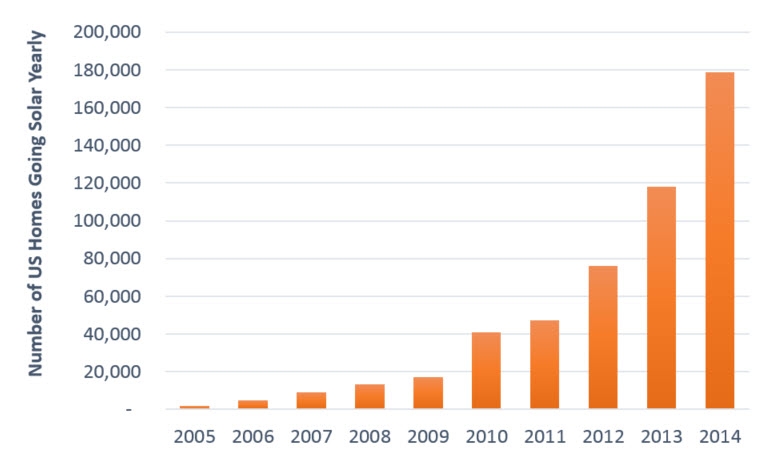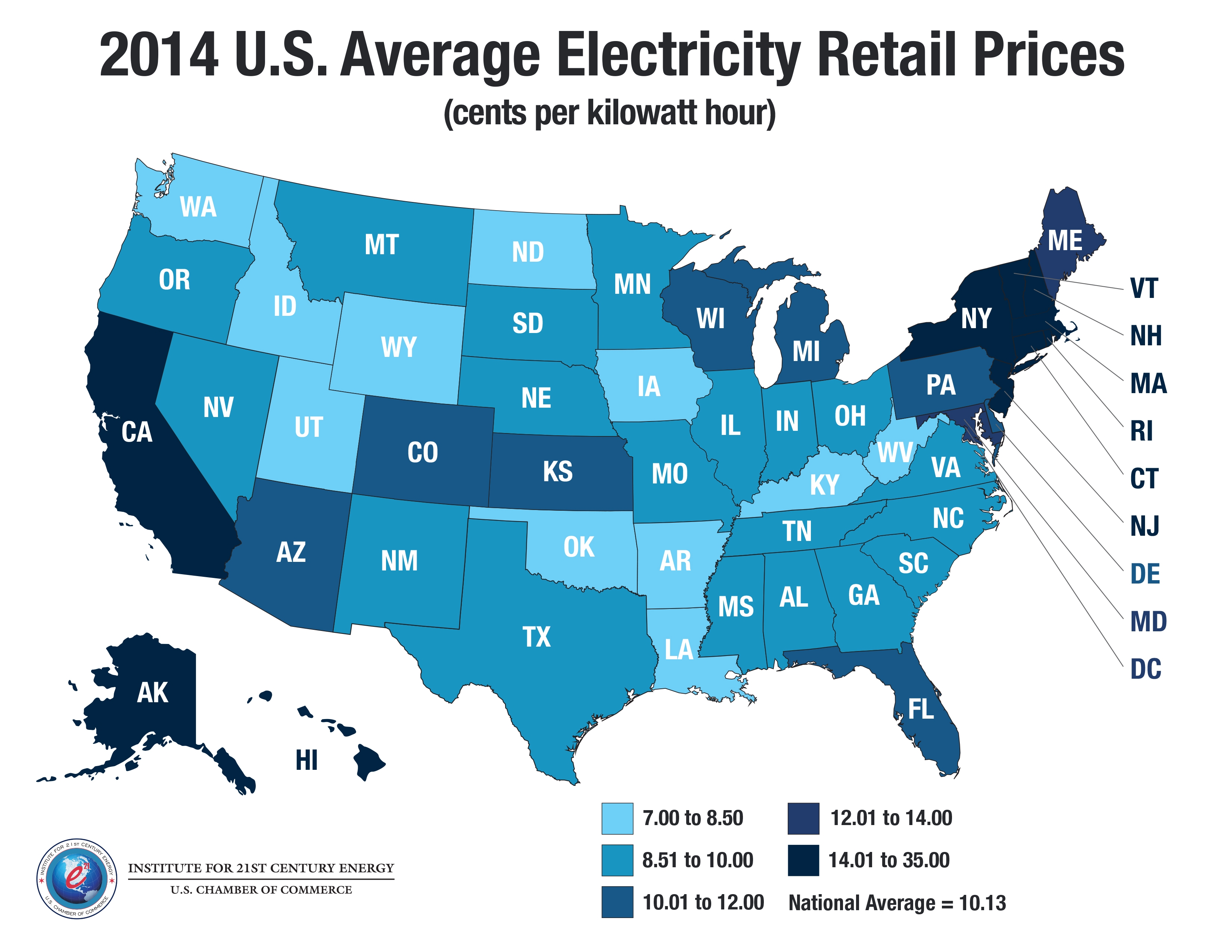Is Solar Right for my Home?
When thinking about solar, it’s important to consider:
Get Proposals from Solar Installers
Is Solar Right for my Home?
You may be surprised to learn that you don’t have to live in a sunny, warm climate in order to see significant savings with solar power. Solar is a smart investment in most areas, from sunny California and Arizona to less sunny areas with high electricity costs like the Northeast.
Things to Consider
- Current cost of electricity
- Available incentives and rebates
- Direction your roof faces and angle of roof
- Age of your roof
- Obstructions or shading on your roof
Use our solar calculator to estimate your potential savings
Let your house work for you. Enter your address to see how much you could save with solar.
Every Year, More and More Americans Choose to Go Solar

The amount of solar installed each year in the US is growing extremely fast. In 2014 alone, enough solar was installed to power 180,000 homes!
There’s a lot more to consider than how sunny your part of the country is
While solar installations in sunnier climates do produce more electricity, solar is still a worthwhile investment in cloudier climates and can significantly decrease or eliminate your energy bill.
Electricity Rates in Your Area:
The price of electricity in your area is a key factor in the decision to go solar. Installing solar panels makes sense almost everywhere, but the savings you receive will vary, due in large part to the price you are paying your utility for your energy. In fact, because of the variations in energy prices, in some of the cloudier areas of the US, solar homeowners are seeing greater savings than homeowners in sunnier regions, who have lower utility prices.
There are a variety of incentives and rebates offered for homeowners switching to solar power. Currently, these exist at the federal, state and local levels, but vary depending on your region. While incentives and rebates can reward residents with significant cost savings, as solar prices are steadily decreasing, these financial incentives are becoming less important for homeowne
Characteristics of an Ideal Home for Solar
While solar works for almost all homes, the “best of the best” homes for solar panel installations have the following roof characteristics:
- South or west-facing roof
- Roof angle of 30 degrees
- No obstructions on roof surface, such as chimneys or skylights.
- No buildings or trees casting shadows onto your roof
- Relatively new roof
While the above qualities would fit an ideal solar home, you can still benefit heavily from a solar installation even if you can’t check off everything on the list. The following factors are important to consider when assessing whether your roof is appropriate for solar.
Orientation and Age of Your Roof
Ideally your home will have a south-facing roof, however you can still produce sufficient energy with west or east facing roofs. A pitch of 30 degrees is also ideal, however solar can be installed on roofs with angles from 0 to 45 degrees. Do you have a flat roof? That’s ok too! Your installer can mount the panels at the perfect angle to maximize your energy production. As for the age of your roof, it doesn’t have to be brand new, however you shouldn’t be planning on replacing it within the next few years. As a general guide, if your roof needs to be replaced within the next 5 years, it would be best to have your roof replaced before having your panels added.
Size of Roof and Obstructions
It’s best if your roof is free from obstructions like chimneys, skylights, and dormers. If these are present on your roof, the installer may be able to design the system around them, depending on the roof layout and size. Generally for a solar PV system, there should be 100 square feet of roof per kW, and the average system size in the US is between 5 kW and 7kW.
Shading on Roof
Shadows cast on solar panels from trees or neighboring buildings can significantly decrease their electricity production. While a building’s shadow may not be something you can change, tree branches can be trimmed to decrease their effect on your panel’s production.


